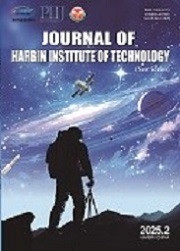| Related citation: | Rentao Xiong,Zengliang Lai,Yisheng Guan,Yufeng Yang,Chuanwu Cai.Burr Contour Recognition and Coordinates Sequence Real-Time Generation for Robotic Deburring Efficiency Optimization[J].Journal of Harbin Institute Of Technology(New Series),2020,27(5):59-67.DOI:10.11916/j.issn.1005-9113.19014. |
|
| Author Name | Affiliation | | Rentao Xiong | School of Electromechanical Engineering, Guangdong University of Technology, Guangzhou 510006, China | | Zengliang Lai | School of Electromechanical Engineering, Guangdong University of Technology, Guangzhou 510006, China | | Yisheng Guan | School of Electromechanical Engineering, Guangdong University of Technology, Guangzhou 510006, China | | Yufeng Yang | Foshan Biowin Robotics and Automation Technology Co., Ltd., Foshan 528000, Guangdong, China | | Chuanwu Cai | Foshan Biowin Robotics and Automation Technology Co., Ltd., Foshan 528000, Guangdong, China |
|
| Abstract: |
| The phenomenon of burring is common in the manufacturing of metal parts. This phenomenon directly influences the assembly accuracy and service performance of the mechanical parts. In this work, we propose a vision-based method for two-dimensional planar workpiece. The proposed technique has the ability to recognize burr contour and generate the coordinate sequence in real-time along x and y directions. The robotic deburring efficiency is improved based on the quantitative information of the burr size. First, by utilizing the local deformable template matching algorithm, we match the standard workpiece contour with the workpiece contour to be processed and compute the corresponding pixels distance between the two contours. Second, we set the distance thresholds in order to divide the burr contours into different levels. We extract the coordinates of the burr contours and map them to the standard workpiece contour. As a result, the closed-loop robotic deburring path sequence is generated. Finally, on the basis of the quantitative information of burr size, we adjust the deburring speed in real-time during the deburring process. The experiments performed in this work show that the deburring time of the proposed method is reduced by 15.45%, as compared with the conventional off-line programming deburring methods. Therefore, for industrial mass production, the deburring efficiency is greatly improved. |
| Key words: robotic deburring assembly accuracy contour recognition template matching deburring efficiency |
| DOI:10.11916/j.issn.1005-9113.19014 |
| Clc Number:TP249 |
| Fund: |
|
| Descriptions in Chinese: |
| 毛刺轮廓识别和坐标顺序实时生成下的机器人去毛刺效率优化 熊仁涛1,赖增亮1,管贻生1,杨宇峰2,蔡传武2 (1. 广东工业大学 机电工程学院,广州 510006; 2. 佛山博文机器人自动化科技有限公司,佛山 528237) 创新点说明:1) 提出一种基于视觉的毛刺轮廓识别方法; 2) 将毛刺轮廓坐标按照标准工件闭环轮廓去毛刺加工顺序实时生成; 3) 通过调整去毛刺速度提高机器人去毛刺的效率。 研究目的: 提供一种高精度和高效率的机器人自动化去毛刺技术和装备,解决现代机械制造行业中存在的加工精度差和去毛刺效率低的问题,包括但不限于机器人去毛刺、抛光打磨、焊缝处理、喷涂等机器人自动化作业。 研究方法: 1)基于局部可变形模板匹配算法,将标准工件轮廓与待加工工件轮廓进行配准; 2)计算两轮廓之间逐点像素距离,基于设定的距离阈值将毛刺大小划分为不同的量级; 3) 将毛刺轮廓坐标映射到标准工件轮廓中,实时生成机器人去毛刺闭环加工路径顺序; 4) 基于毛刺大小量化信息,实时调整机器人去毛刺的速度。 研究结果: 1)针对具有随机形变的工件,基于局部可变形模板匹配算法可以获得高的轮廓匹配度; 2) 在X和Y方向上,对毛刺轮廓坐标进行排序,可以生成与标准工件轮廓去毛刺路径一致的加工顺序; 3) 基于毛刺大小量化信息,可以实时调整机器人去毛刺的速度。 结 论: 基于视觉的提高机器人去毛刺效率的方法,相比传统离线编程去毛刺,去毛刺效率提高了13.53%。 关键词:机器人去毛刺;装配精度;轮廓识别;模板匹配;去毛刺效率 |




